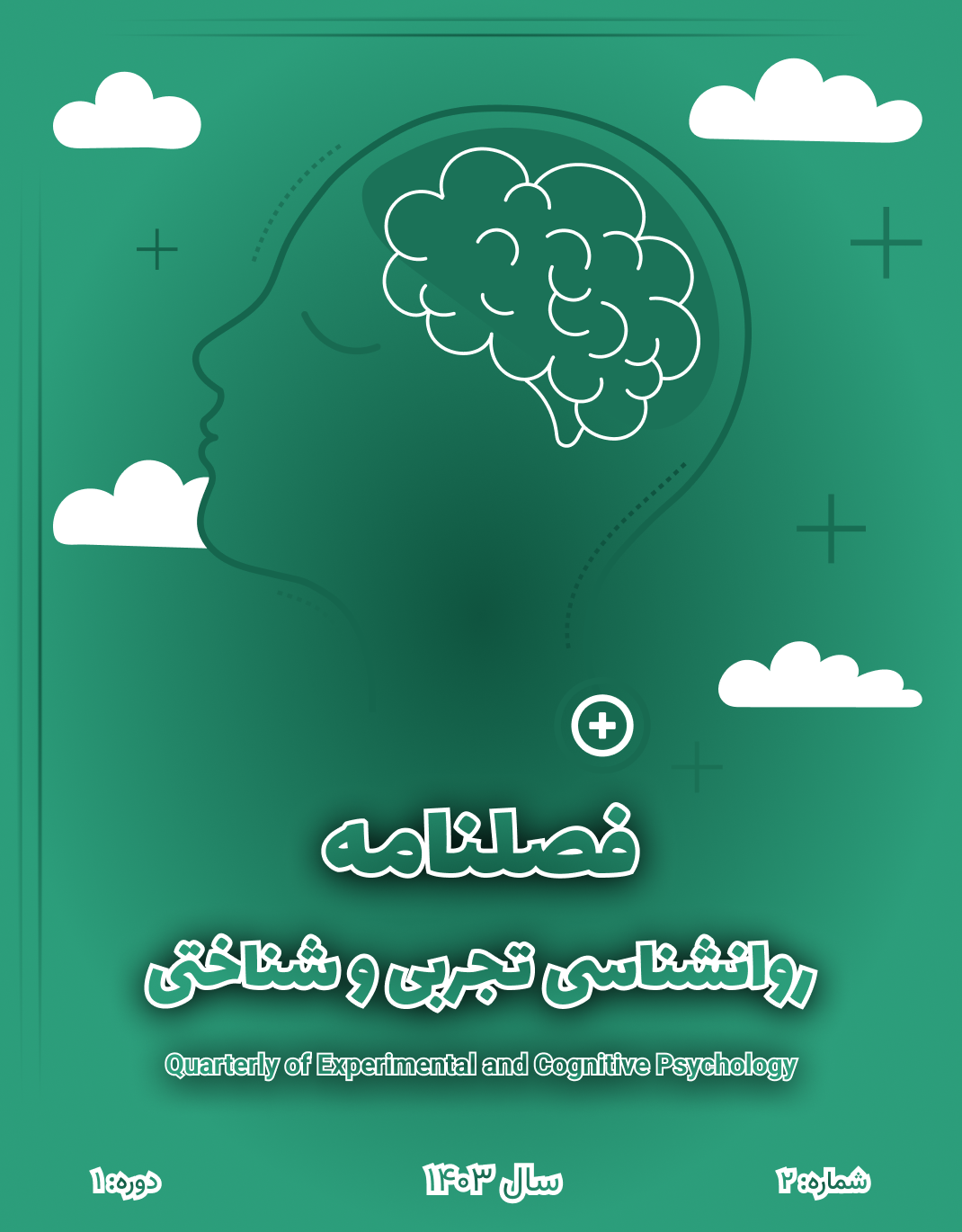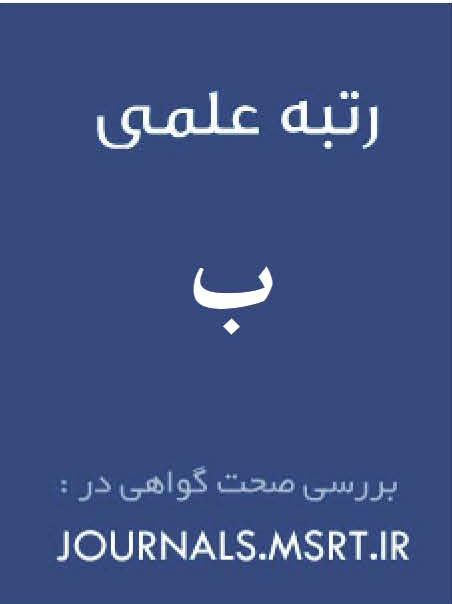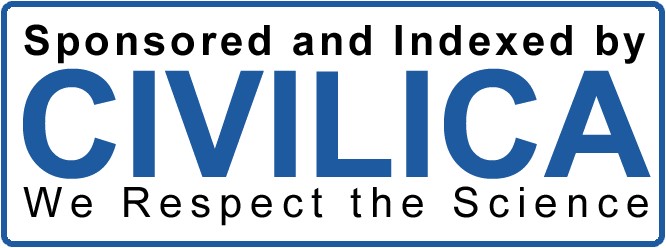تأثیر سواد سلامت روانی بر رفتارهای پرخطر با واسطهگری درک خود و کنترل هیجان در دانش آموزان دوره دوم متوسطه
کلمات کلیدی:
سواد سلامت روانی, رفتارهای پرخطر, درک خود, تنظیم هیجان, دانشآموزان متوسطهچکیده
هدف: هدف پژوهش حاضر بررسی تأثیر سواد سلامت روانی بر رفتارهای پرخطر با نقش واسطهای درک خود و کنترل هیجان در دانشآموزان دوره دوم متوسطه بود. مواد و روش: پژوهش از نوع توصیفی-همبستگی بود و جامعه آماری آن شامل کلیه دانشآموزان دوره دوم متوسطه ناحیه یک شهرستان سنندج در سال تحصیلی ۱۴۰۴–۱۴۰۳ بود. نمونهای به حجم ۲۸۰ نفر با روش نمونهگیری تصادفی طبقهای انتخاب شد. ابزارهای گردآوری داده شامل مقیاس رفتارهای پرخطر نوجوانان (YRBS)، پرسشنامه سواد سلامت روانی، مقیاس درک خود هارتر، و پرسشنامه تنظیم هیجان گارنفسکی بود. برای تحلیل دادهها از ضریب همبستگی پیرسون و مدلیابی معادلات ساختاری با استفاده از نرمافزارهای SPSS-27 و AMOS-21 بهره گرفته شد. یافتهها: یافتهها نشان داد که سواد سلامت روانی با رفتارهای پرخطر رابطه منفی معنادار دارد (β = -0.28، p < 0.001) و همچنین تأثیر مستقیم و معناداری بر درک خود (β = 0.43، p < 0.001) و کنترل هیجان (β = 0.39، p < 0.001) دارد. درک خود (β = -0.21) و کنترل هیجان (β = -0.26) نیز بهطور معنادار رفتارهای پرخطر را کاهش میدهند. تأثیر غیرمستقیم سواد سلامت روانی بر رفتارهای پرخطر از طریق متغیرهای میانجی نیز معنادار بود و تأثیر کل این متغیر برابر با β = -0.53 برآورد شد. شاخصهای برازش مدل ساختاری در سطح مطلوب قرار داشتند (CFI = 0.95، RMSEA = 0.051). نتیجهگیری: یافتههای پژوهش نشان میدهد که ارتقای سواد سلامت روانی میتواند از طریق تقویت درک خود و کنترل هیجان به کاهش رفتارهای پرخطر نوجوانان کمک کند؛ بنابراین، مداخلات آموزشی با تمرکز بر آگاهی روانی و مهارتهای هیجانی در محیط مدرسه ضروری است.
دانلودها
مراجع
Arbel, R., Perrone, L., & Margolin, G. (2016). Adolescents’ Daily Worries and Risky Behaviors: The Buffering Role of Support Seeking. Journal of Clinical Child & Adolescent Psychology, 47(6), 900-911. https://doi.org/10.1080/15374416.2016.1169536
Auerbach, R. P., Tsai, B., & Abela, J. R. Z. (2010). Temporal Relationships Among Depressive Symptoms, Risky Behavior Engagement, Perceived Control, and Gender in a Sample of Adolescents. Journal of Research on Adolescence, 20(3), 726-747. https://doi.org/10.1111/j.1532-7795.2010.00657.x
Goueta, N., Gershy, N., & Pollak, Y. (2025). Reciprocal Relations Between ADHD and Risky Behavior in Adolescence: A Between and Within‐person Longitudinal Analysis. Journal of Child Psychology and Psychiatry. https://doi.org/10.1111/jcpp.14128
Hasikić, A., & Vlah, N. (2017). The Relationship Between the Experience of Resistance Within the Family and Self-Perceived Risky Behaviors Among High School Students. Zbornik Radova 18(15), 63-80. https://doi.org/10.51728/issn.2637-1480.2019.15.63
Heriansyah, M. (2018). The Contribution of Group Guidance Services on the Students Risky Behavior Prevention Program. Jurnal Pipsi (Jurnal Pendidikan Ips Indonesia), 3(1), 4. https://doi.org/10.26737/jpipsi.v3i1.535
Hu, D., Liu, X., Xiao, H., & Zhang, W. (2021). Jogging-Related Risk Cognition and the Stimulation of Risky Behavior During Jogging. American Journal of Health Behavior, 45(2), 256-267. https://doi.org/10.5993/ajhb.45.2.6
Lesmana, M. H. S., & Chung, M. H. (2024). Mediating Roles of Perceived Stigma and Mental Health Literacy in the Relationship Between School Climate and Help-Seeking Behavior in Indonesian Adolescents. PLoS One, 19(5), e0298017. https://doi.org/10.1371/journal.pone.0298017
Pratiwi, R., & Mudjiran, M. (2020). The Contribution of Self-Regulation and YouTube Users to Risky Sexual Behavior for Boarding House Students. Journal of Counseling and Educational Technology, 3(1). https://doi.org/10.32698/01021
Ray, J. M., Kats-Kariyanakatte, P., Moore, L., & Jacquin, K. M. (2022a). Risky Behavior in Adults Related to Gender, Age, and Children at Home. https://doi.org/10.36315/2022padviii09
Ray, J. M., Kats-Kariyanakatte, P., Moore, L. R., & Jacquin, K. M. (2022b). Gender, Age, and Children at Home Influence Risky Behavior in Adults. https://doi.org/10.36315/2022inpact067
Recto, P., & Champion, J. D. (2016). Psychological Distress and Associated Factors Among Mexican American Adolescent Females. Hispanic Health Care International, 14(4), 170-176. https://doi.org/10.1177/1540415316676224
Samadypoor, R., & Tamini, B. K. (2016). The Role of Personality Pattern Behaviors in Risk Behaviors of High School Students. International Journal High Risk Behaviors & Addiction, 5(4). https://doi.org/10.5812/ijhrba.36313
Shi, X. Y., Pan, J., & Li, M. (2024). Assessing the Role of Mental Health Literacy in Shaping Adolescent Health Attitudes and Its Association With Obesity in China. American Journal of Health Behavior, 48(6), 1663-1674. https://doi.org/10.5993/ajhb.48.6.17
Waliyanti, E., Dewantari, R. A., Puspita, D., & Primastuti, H. I. (2023). Sexual Behavior of Adolescents: Risk Factors in Rural Areas. Media Kesehatan Masyarakat Indonesia, 19(2), 61-72. https://doi.org/10.30597/mkmi.v19i2.21663
Wang, X., Wang, S., Song, T., Feng, K., & Li, Y. (2024). Intergenerational Transmission of Mental Health Literacy and Its Mechanism: The Mediating Effect of Parent-Child Relationship and the Moderating Effect of School Mental Health Service. Psychology research and behavior management, Volume 17, 1177-1189. https://doi.org/10.2147/prbm.s453122
Weiss, N. H., Sullivan, T. P., & Tull, M. T. (2015). Explicating the Role of Emotion Dysregulation in Risky Behaviors: A Review and Synthesis of the Literature With Directions for Future Research and Clinical Practice. Current opinion in psychology, 3, 22-29. https://doi.org/10.1016/j.copsyc.2015.01.013
Weiss, N. H., Tull, M. T., Dixon‐Gordon, K. L., & Gratz, K. L. (2016). Assessing the Negative and Positive Emotion-Dependent Nature of Risky Behaviors Among Substance Dependent Patients. Assessment, 25(6), 702-715. https://doi.org/10.1177/1073191116665906
Xu, J., Lv, j., Zeng, H., Wu, L., & Cheng, F. (2023). Smoking, Drinking, Sleeping and Risky Sexual Behaviors: A Cross Sectional Study in China (Preprint). https://doi.org/10.2196/preprints.51189
Yani, A. (2024). Enhancing Adolescent Mental Health Literacy: Strategies for Stigma Reduction and Help-Seeking Behavior. JRKPK, 3(2), 78-86. https://doi.org/10.61194/jrkpk.v3i2.668
Zakrajsek, J. S., Molnar, L. J., Eby, D. W., Kostyniuk, L. P., Zanier, N., LeBlanc, D. J., & Sayer, T. (2022). Guidelines for Developing Evidence-Based Risky Driving Countermeasures That Include Older Drivers. Innovation in Aging, 6(Supplement_1), 164-164. https://doi.org/10.1093/geroni/igac059.655
دانلود
چاپ شده
ارسال
بازنگری
پذیرش
شماره
نوع مقاله
مجوز
حق نشر 2025 Faranak Ghodsi, Sahar Gholami Matikolaei (Author)

این پروژه تحت مجوز بین المللی Creative Commons Attribution-NonCommercial 4.0 می باشد.






